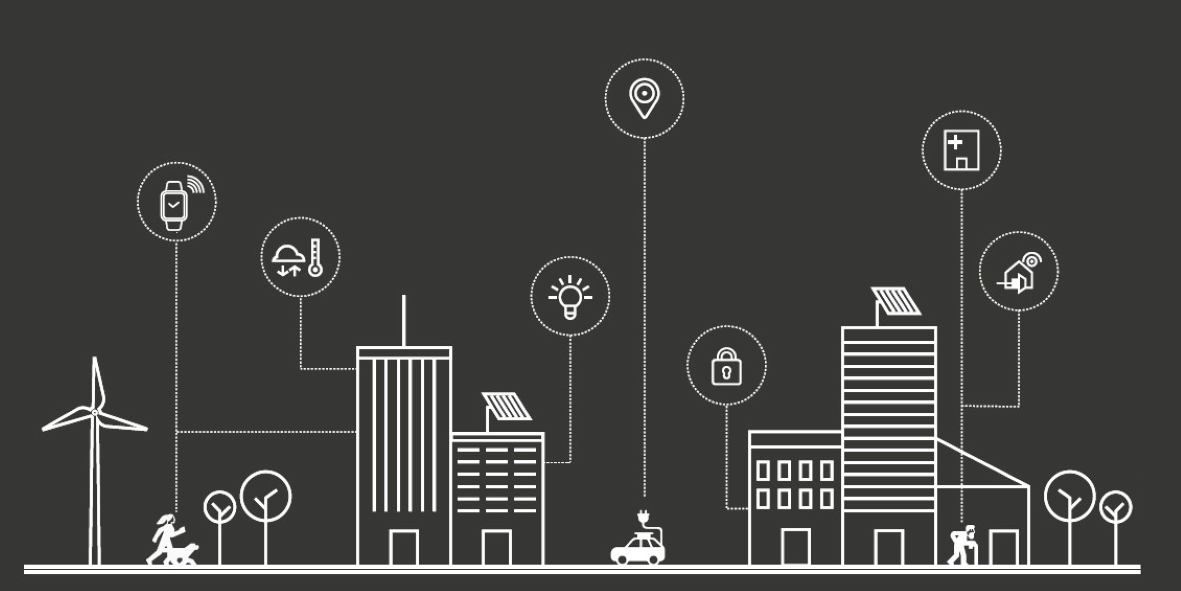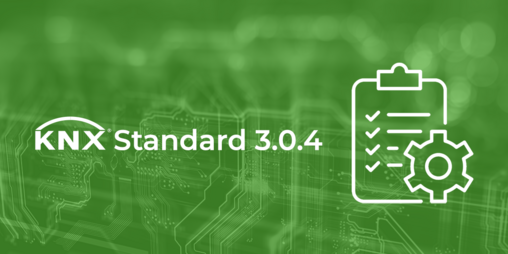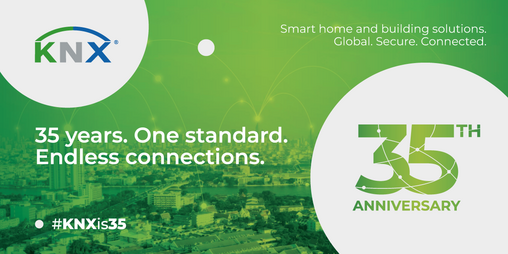01. Jun 2020
Smart Home Energy Management with KNX

Smart sector coupling with KNX - electricity + heating + transport
Energy transition, climate protection, sector coupling - these keywords point to a turning point in the energy industry. Buildings will also be affected by the transition from fossil fuels to green energy. Energy consumption must be coordinated, managed and controlled. This applies in particular to electric mobility and other large consumers. The KNX Smart Home offers specific solutions for this, including for e-car home charging stations.
E-charging stations in residential buildings are growing in prominence. This raises questions like: How much energy will they need? Can one charge one's vehicle whenever one wants? How much energy is available? Can low prices at certain times of day be used for low-cost charging?
Network-related issuesDomestic electricity connections, usually with a voltage of 3x230 volts and 63 ampere fuse, are already confronted with high battery capacities of up to 100 kWh. Commercially available charging stations offer connection capacities of between 3.6 kW (1x230 V, 16 A) and 22 kW (3x230 V, 32 A). Depending on battery capacity, charging time and number of e-cars, domestic electricity connections will be exposed to high loads. The energy required for e-vehicles can cause total household electricity consumption to more than double. External grids and the energy supply also need to be able to cope with this increased consumption. As electricity increasingly comes from wind and solar generation, fluctuations in the energy supply are to be expected. Against this backdrop, e-mobility has the advantage that it can act to balance the electricity grid thanks to flexible charging times and, in future, feed-in where necessary.
Energy management with KNX IoTTo ensure grid stability in the future, energy consumers and producers must be managed across all grid levels with regard to load and time. KNX IoT services enable the integration of energy participants, such as intelligent charging stations, into the KNX Smart Home. The key to energy management is a so-called CEM (Customer Energy Manager), an interface between the intelligent power grid (S1) and the KNX Smart Home (S2). The CEM coordinates the interaction between external energy consumption specifications and its internal optimisation. Communication is based on the "Smart Grid/Smart Home architecture" standard. To ensure interoperability, international working groups at the standardisation bodies CEN / CENELEC TC 205 / WG 18, in which KNX participates, are developing appropriate data models and optimisation strategies.
Optimisation principleThe optimisation process follows a relatively simple principle. The CEM consults the energy participants on their energy needs in a given period of time. Participants include consumers such as household appliances, heat pumps and water heaters, as well as energy producers such as photo-voltaic systems, energy storage systems or e-car charging stations. These contrasting consumption/generation energy profiles can then be optimised using the information on expected available energy and price offers. This is done by creating energy/time profiles which consist of slots lined up next to each other. Each slot defines the amount of energy required during the period.
Charging sequences With its flexible charging possibilities, e-mobility is a clear example of the profiles process (see Fig. 3). Ideally, smart charging stations with KNX IoT services would be integrated into the smart home. The CEM has access to energy offers including their costs and times. These are Hight tariff (HT) and Low Tariff (LT) and, in future, special e-vehicle charging rates. If all vehicles at-tempted a full charge at LT, the network would be over-loaded. Therefore vehicle 1 (green), which must be charged for a short time, begins charging in the LT but has to finish charging in the HT. Vehicle 2 (blue), whose charging process takes longer, uses an alternative charging sequence. It also partially charges in the NT but then skips the HT and completes charging in the next NT. This procedure is not only good for vehicle owners' wallets, it also compensates for over- and under-supply of electricity and thus contributes to grid stability.
SummaryAutomatic energy consumption management is necessary to avoid exceeding peak loads while also using energy economically. KNX building automation forms the basis for active and complex energy management. KNX IoT services will continue to ensure the integration of as many energy participants as possible.
Intelligent charging of electric carsImportant protocols are available with smart charging stations and charging columns. This can be used, for example, to check usage authorisation, control charging processes and even to regulate the energy supply. KNX with KNX IoT services can provide the evaluation units required for this purpose. In this way, charging columns can be controlled based on individual user behaviour. A visualisation with diagrams and graphics provides an overview of chargeable energy quantities, percentage charge status and personal use. Available energy, for example from a photovoltaic system, can also be displayed.
Highlights
-
 Press
PressKNX Launches KNX Standard Version 3.0.4
KNX Association is proud to announce the release of Version 3.0.4 of the KNX Standard to its manufacturer members. The KNX ... -
 News
NewsWin KNX Devices Every Day with the KNX Advent Calendar Game
The holiday period is around the corner and this is the ideal opportunity for KNX Association to hand out gifts to you. With ... -
 KNXtoday
KNXtoday#KNXis35: KNX history and evolution
KNX is 35. This worldwide building control standard, initiated by a handful of visionary European manufacturers, now has ...



